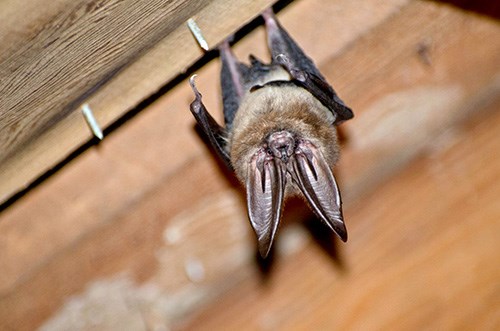Bats are one of our more mysterious and most misunderstood groups of mammals in B.C. Even though they are all around us, these intriguing creatures of the night are rarely seen by many people. With 16 species of bats in B.C., these animals play an important role by keeping many insect pests such as mosquitoes under control.
And now, bats have been placed at risk of extinction by a new disease, the so-called white nose syndrome that is sweeping across North America.
There are two main groups of bats: a tropical family, including the large flying foxes that pollinate many tropical fruits; and a group of smaller bats in temperate climates that are insect-eaters.
(And then, of course, there are a few oddballs among bats, including ones in the tropics that catch fish and vampire bats, which borrowed a trick from mosquitoes and suck blood as their food source. While vampire bats may account for the fear some people have of bats, they are found only in tropical and sub-tropical parts of Central and South America.)
B.C. has the greatest diversity of bats in all of Canada. In fact, eight of the species found here are found nowhere else in Canada.
Bats are the only group of mammals capable of sustained flapping flight, a feature they share with birds. Other mammals, such as flying squirrels, can glide but they cannot truly fly. Two other important adaptations of bats are echo-location, which enables them to find food in total darkness, and their ability to hibernate each winter.
Bats have a modified forelimb for flight with a hairless membrane that stretches over the fingers and arms. They have a second smaller membrane between their hind legs and tail. A bat cannot easily walk on its weak hind limbs, which are modified for hanging upside down, its usual resting position.
Bats produce a high-pitched sound for echo-location that cannot be heard by most people — except young children, who can hear higher frequencies than adults. Bats’ ears are specially adapted to pick up these sounds, which bounce off objects such as prey. Thus, their ears are usually large and feature a fleshy lobe at the entrance called a tragus, which is thought to play a fundamental role in echo-location. Echo-location is thought to work at distances up to 10 m; beyond that, bats rely on their vision for flight.
Bats roost in trees, especially in mature forests around water where their prey is usually located. Some bats are camouflaged to blend in with their surroundings — the western red bat looks like a dead leaf and the hoary bat resembles lichen.
Their main food is flying nocturnal insects. Experiments conducted on little brown myotis showed these bats could eat up to 10 mosquitoes per minute.
Bats mate just before hibernation in the fall. By April, most arrive at their summer roosting areas. The females have a delayed implantation of their egg so that their young are born in June or July. Most bats give birth to only a single pup, which can live for up to 30 years. Female bats seek especially warm places with temperatures around 40 C where they can rear their babies in large groups, hence their predilection for sites such as attics.
By late August, most bat pups will be able to fly. Depending on the weather, bats return to their hibernation sites in late October or November. The details of the life cycle of many bat species in B.C. remains unknown and additional studies are now urgently needed.
White nose syndrome (WNS) was first reported in eastern North America in 2006. Accidentally introduced from Europe, it is a fungus that grows on the nose and kills many bats by interfering with breathing during hibernation. Bats afflicted with WNS are thus aroused from hibernation many times; this consumes energy and depletes their vital reserves so they die of starvation before the hibernation season has ended. So far, almost six million bats have been killed by WNS and many colonies have been completely eliminated.
Originally, it was thought the long distance from the east coast would offer some protection to bats in B.C. as it would delay the arrival of the disease and, thus, allow scientists to develop a way to control or cure it. But shockingly, in March, it was reported a dead bat with WNS was found only 50 km east of Seattle. Until then, the only affected areas were not much further west than the western edge of the Great Lakes.
Locally, both Minnekhada and Colony Farm regional parks in Coquitlam host significant maternal rearing sites for bats.
At Minnekhada in 1995, Burke Mountain Naturalists member Kiyoshi Takahashi (whose photo accompanies today’s column), discovered a rare species of bat, the Townsend’s big-eared bat. In 2014, he estimated the size of this colony had grown to 180 bats.
At Colony Farm, one of the heritage buildings hosts maternal colonies of Yuma myotis bats and, possibly, other species. Last year at Colony Farm Regional Park, volunteers counted more than 500 bats at dusk.
It is utterly shocking these colonies and bats throughout B.C. have now been placed at risk from WNS, especially when so little is known about these species, including the locations where they hibernate during winter. This is the gravest risk bats in B.C. have ever faced.
Elaine Golds is a Port Moody environmentalist who is president and conservation chair of the Burke Mountain Naturalists, and member of the boards of the Colony Farm Park Association and the Port Moody Ecological Society.



